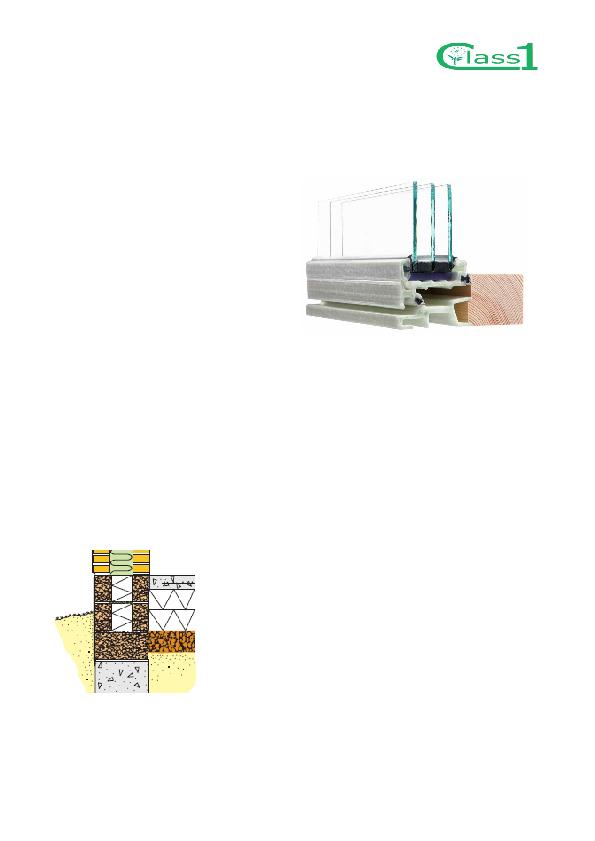
energy windows could be produced at competitive costs and thus priced competitively to the end-user.
Compared to for example German passive house windows the product is vastly more cost-effective.
However PRO TEC 7
market. Combined with increased draught resistance,
the problems of internal condensation and mould
build-up are avoided. At the same time, the slim
window system can allow a larger glass area,
resulting in an increased level of natural light flooding
into the rooms.
longer warranty period is that the product is produced with very few errors and that the necessary service
level for the product is lower than expected.
foundations. The different parameters can have a positive as well as negative influence on each other and
only calculations can show the effect of these combinations. Beside the parameters that influence the heat
loss there is parameters regarding stability, load bearing capacity, robustness and comfort that has to be
taken into account when the solutions are developed.
heat loss values are 0.10 W/m²K for floor slabs and 0.12 W/(m·K) for
foundations. The analysis and development of improved solutions shows
that it is possible to reach a U-value of 0.08 W/m²K for the floor slab and a
heat-loss of 0.08 W/(m·K) for the foundation with existing products and
building solutions. Taking into account also a new concept for foundation
and floor slab insulation it is possible to reduce these values further to
0.074 W/m²K and 0.048 W/(m·K) for the floor slab and foundation
respectively. This corresponds to heat-loss reductions of 26% and 60%
compared to the present Danish Building Regulation and thus shows the
way for future energy savings in the housing industry.